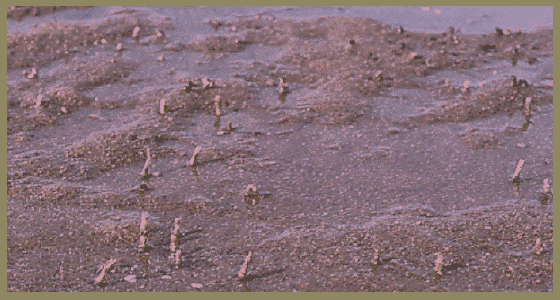



Polychaeta: Life History and Ecology






Polychaetes are among the most common animals in shore line environments. The tubes sticking up from the sand in this picture, taken on a beach at Bahia de las Animas, Baja California, give some idea of how common polychaetes can be in such environments. These burrowing worms use paddle-like parapodia or repeated body movements to move water through their burrows, bringing in food.
Not all polychaetes are burrowers, however; many sessile forms secrete their own encasing tube, and in situations where many of these worms grow together, the tubes may form a reef. These polychaetes may have large spirals of feather-like tentacles which they extand into the water to search for food. The tentacles are often colorful and quite beautiful. Other polychaetes have a more active lifestyle as grazers, predators, or scavengers. Some free-living species have taken up parasitic habitats, and possess a pair of suckers and dagger-like jaws.
One of the strangest and best-studied polychaete life histories is that of the genus Eunice. These polychaetes reproduce for only a few days in conjuction with a particular phase of the moon. The females come out at night, producing their own light which attracts the males. Both sexes then bud-off their butt-end, which in some species will then go on to grow its own head. These polychaete bits contain the sexual organs, from which are released millions of sex cells which will cloud the water. In the Bermuda and West Indies, a special festival is held to harvest these as a delicacy.
Many polychaetes hatch from their eggs into a particular type of planktonic larva, the trochophore, which later metamorphoses into a juvenile annelid. Some polychaetes, however, can reproduce asexually, by budding.


